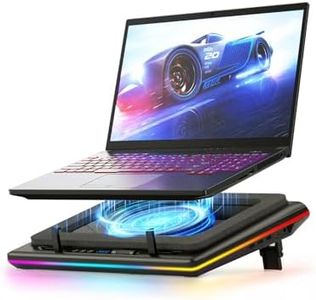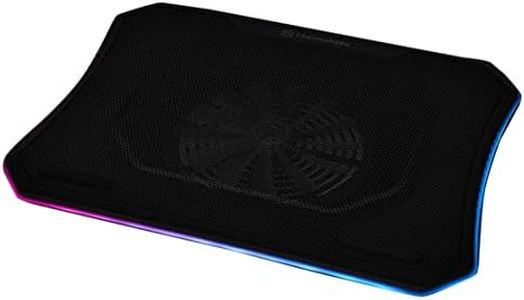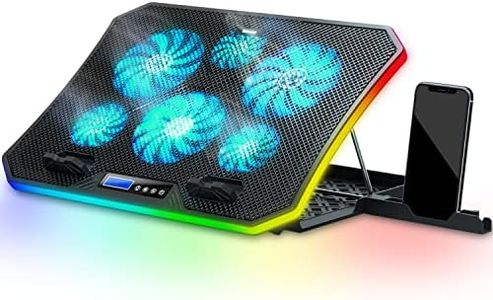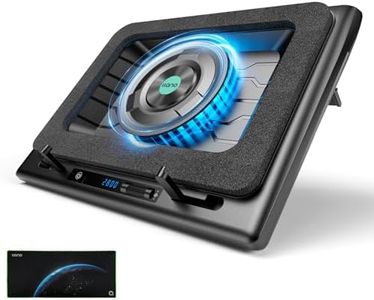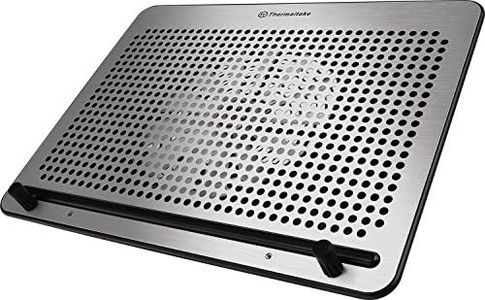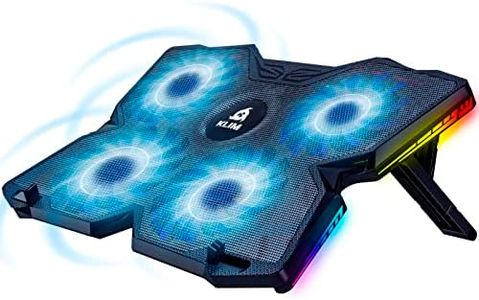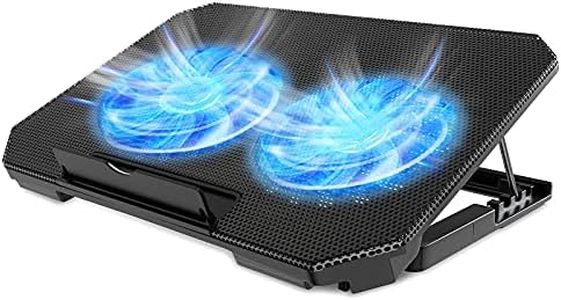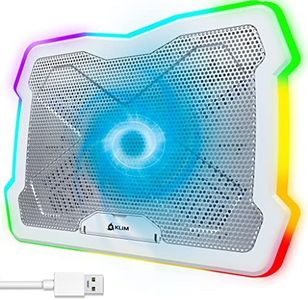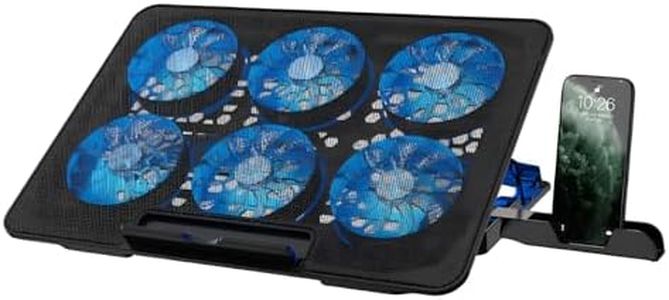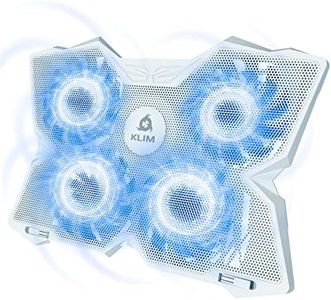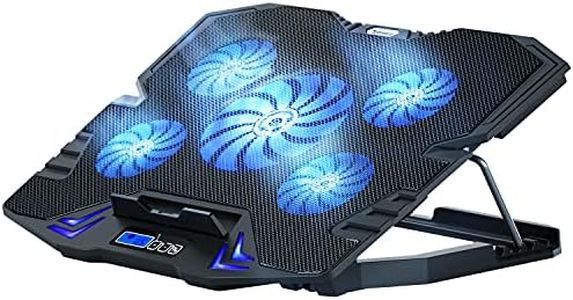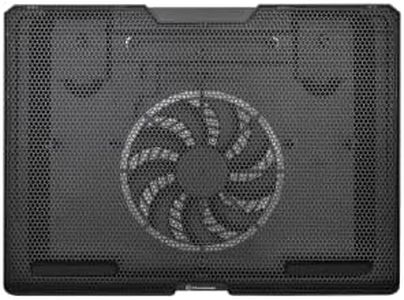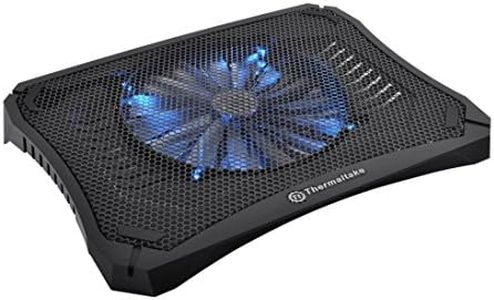We Use CookiesWe use cookies to enhance the security, performance,
functionality and for analytical and promotional activities. By continuing to browse this site you
are agreeing to our privacy policy
10 Best Laptop Cooling Pads
From leading brands and best sellers available on the web.Buying Guide for the Best Laptop Cooling Pads
When selecting a laptop cooling pad, it's essential to focus on how it will help keep your laptop temperature under control during use. Cooling pads enhance airflow around your laptop, preventing overheating, which can lead to slower performance and long-term damage. To find the right cooling pad, think about where and how you'll use your laptop, your laptop's size, and the kinds of tasks you usually do—whether it's gaming, heavy work, or light browsing.Fan Size and NumberThe fan size tells you how large the fans are, and the number of fans indicates how many are built into the cooling pad. Larger fans tend to move more air but often operate more quietly, while smaller fans may spin faster but could be noisier. Pads with more fans can sometimes provide better cooling coverage. When comparing options, if you do processor-heavy work or gaming, look for larger or multiple fans. For casual use, one or two medium-sized fans should suffice.
Cooling Performance (CFM)CFM stands for Cubic Feet per Minute and measures how much air the cooling pad can move. Higher CFM means more airflow, which typically leads to better cooling. Pads with higher CFM ratings are particularly useful for power users or those whose laptops tend to heat up a lot. For general web browsing or document work, a moderate CFM rating will often be enough. Think about how hot your laptop gets and choose the airflow level accordingly.
Adjustable Height/AnglesSome cooling pads offer adjustable stands or angles, allowing you to change your laptop's height or tilt for comfort and better airflow. This feature can be vital if you use your laptop for long periods or want an ergonomic typing or viewing angle. If posture and comfort matter to you, or if you use your laptop for several hours, picking a pad with several adjustment options can be a smart choice.
Noise LevelCooling pads can make some noise due to their fans. Noise levels are usually measured in decibels (dB). Lower dB means quieter operation. If you work in a shared or quiet space, a quiet cooling pad matters. For gamers or users who use headphones, noise may be less of an issue. Consider your typical environment and tolerance to background noise when deciding.
Laptop Size CompatibilityThis spec shows the range of laptop sizes (measured in inches diagonally) that will fit on the cooling pad. Using a pad that matches your laptop's size ensures stable support and good airflow distribution. If you have a larger laptop, always check the maximum supported size. If you plan to use multiple laptops, look for a pad with a broad compatibility range.
Port and Power OptionsCooling pads usually draw power from your laptop via USB. Some have extra built-in USB ports, so you don't lose a port by connecting the pad. This spec matters if you use multiple USB devices and want to avoid running out of ports. If you regularly attach many peripherals, pick a pad that passes through or expands your USB ports.
Build MaterialCooling pads can be made from plastic, metal, or a combination. Metal pads (often aluminum) can help with heat dissipation, making them slightly more efficient. Plastic pads tend to be lighter and sometimes less expensive. If portability is important, consider a plastic pad for lighter weight. If you want maximum cooling, a metal surface might be preferable.
